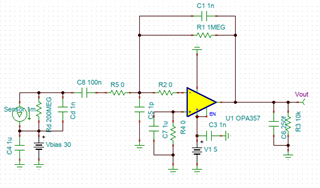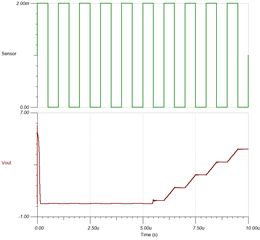Tool/software:
I would like to design a charge amplifier for a sensor with 1nF and 200MOhms and bias voltage 30V. Sensor current is around 1 mA. This is the circuit I have now:

My output is a strange:

I have tested several parameters to get a better output, but without success. Any suggestion on how to improve this?



